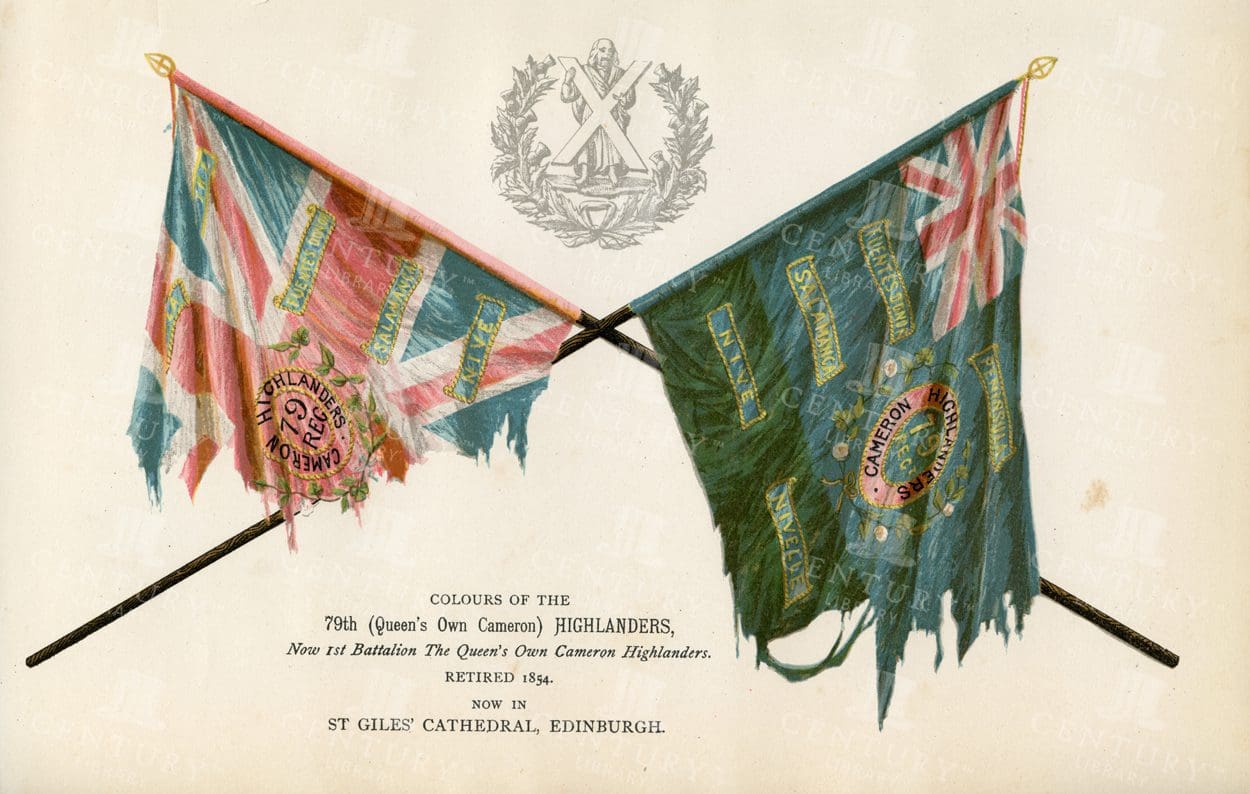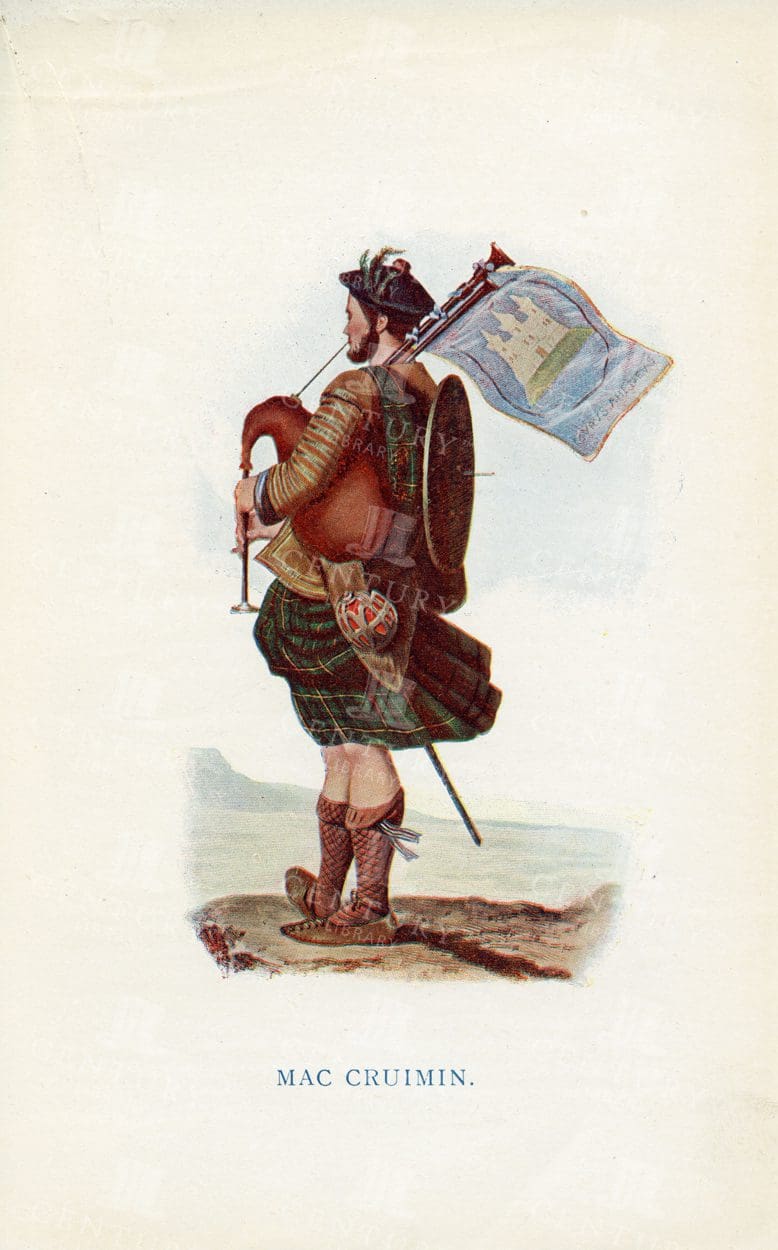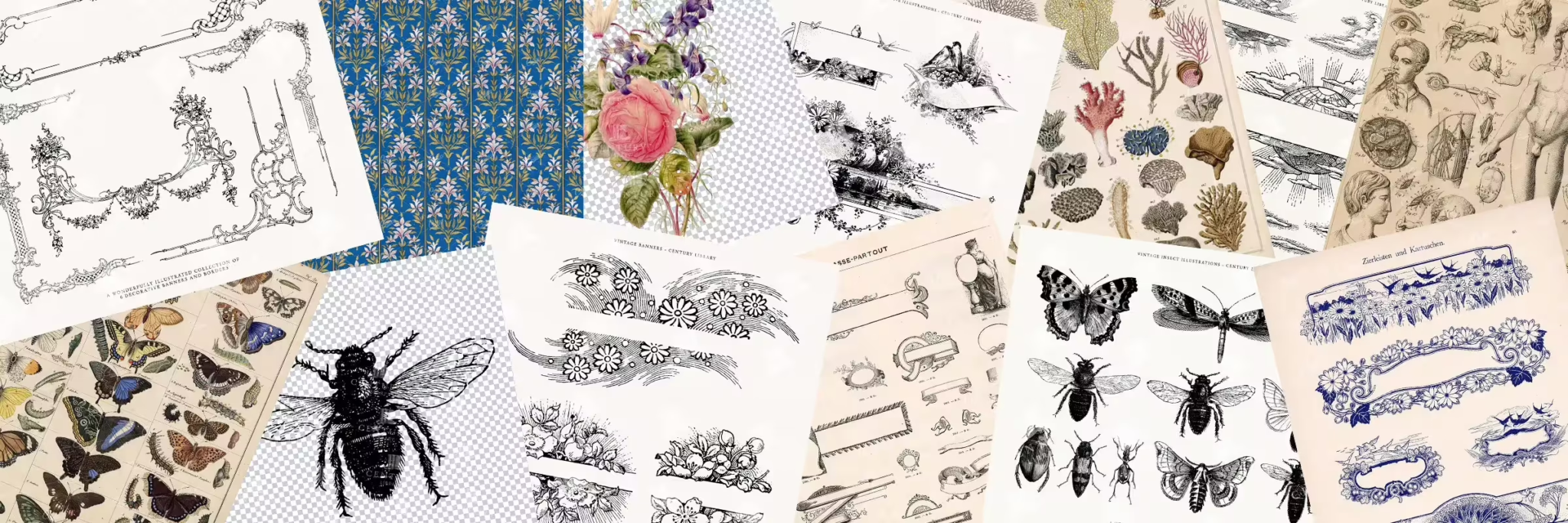
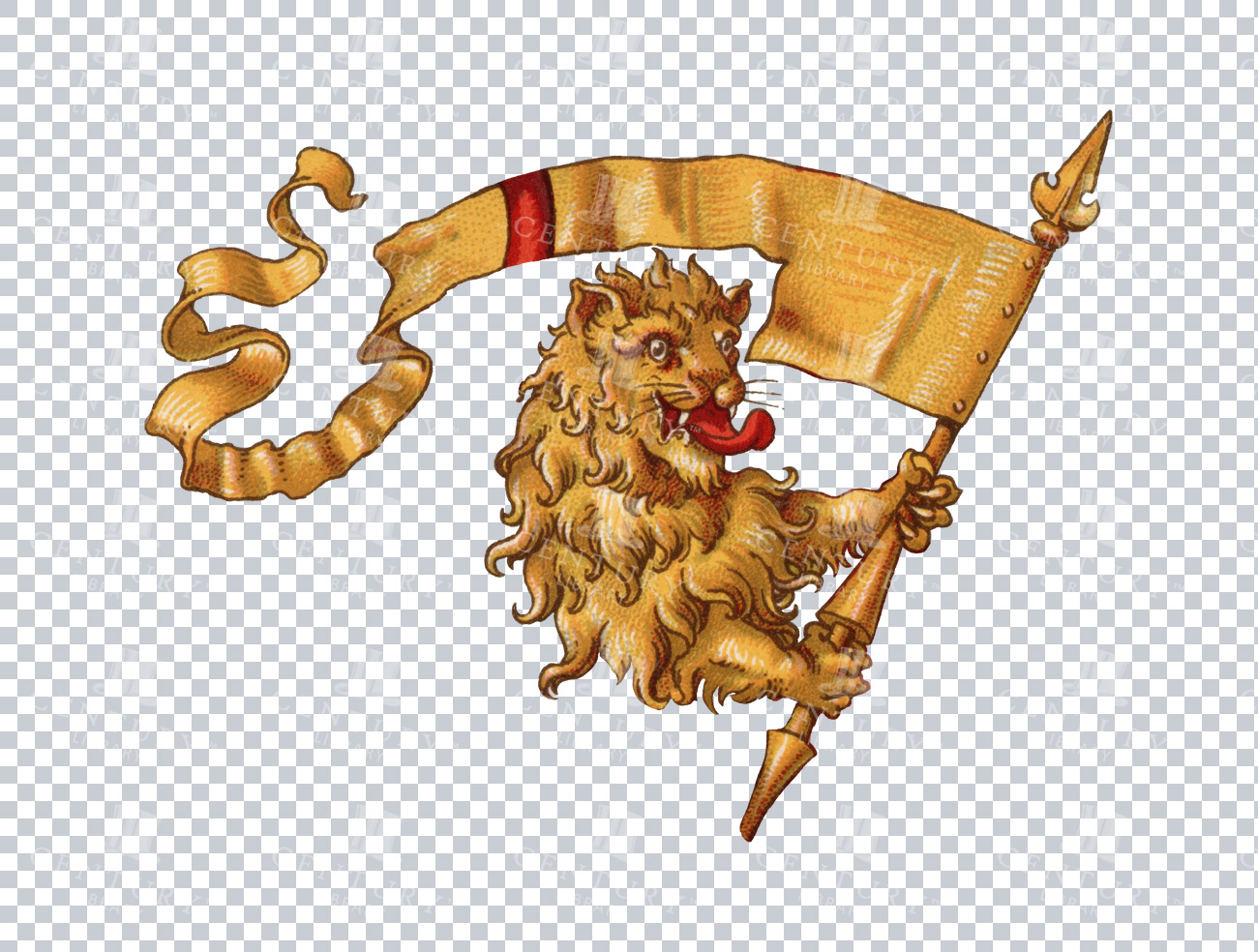

Vintage Heraldic Lion Holding a Banner Illustration
An isolated PNG image of a vintage heraldic lion holding a decorative banner. The lion is drawn in a classic style, often seen in traditional coats of arms. The banner flows gracefully, adding a sense of motion to the image. Perfect for historical, fantasy, or medieval-themed designs.
- Resolution: 2318 x 1754
- Image Type(s): PNG
Related Images
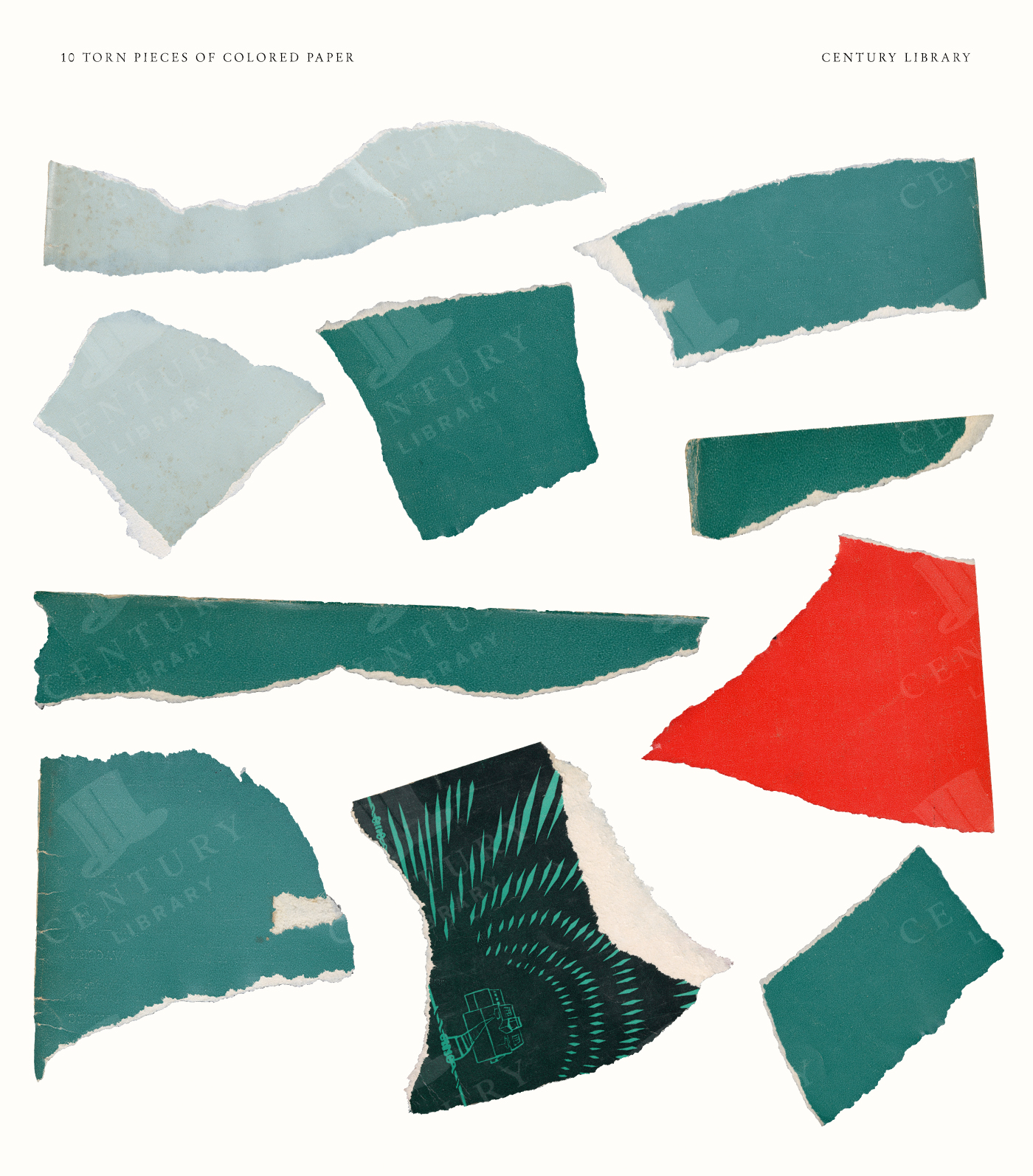

10 Torn Paper Cutouts – Colorful Retro PNG’s for Digital Collage Art
This pack features 10 torn paper scraps sourced from mid-century printed materials and digitized with care. With muted greens, dusty blues, a bold red, and graphic black print, each piece is isolated with a transparent background and retains its natural torn edge. Perfect for digital collages, zines, mood boards, and layered vintage compositions.
- Image Type(s): ZIP (with PNGs)
- paper scrap
- colored paper PNG
- paper ephemera
- retro paper scrap
- collage paper
- digital torn paper
- torn edge
- scrapbooking paper
- ripped paper
- digital paper texture
- cutout paper
- ripped paper PNG
- torn paper PNG
- grunge paper scrap
- red paper scrap
- vintage collage paper
- green paper scrap
- torn page PNG
- blue paper scrap
- textured paper
- printable scraps
- junk journal ephemera
- collage scraps
- zine collage
- torn paper
- torn paper piece
- paper overlay
- Ephemera PNG
- country
- Paper Texture
- Vintage Paper
- Flag
- Map
From this collection


Vintage Heraldry Naval Flag with the Union Jack
A vintage line art illustration of a heraldry naval flag with the Union Jack, perfect for maritime and historical-themed designs.
- Image Type(s): PNG
Related Images
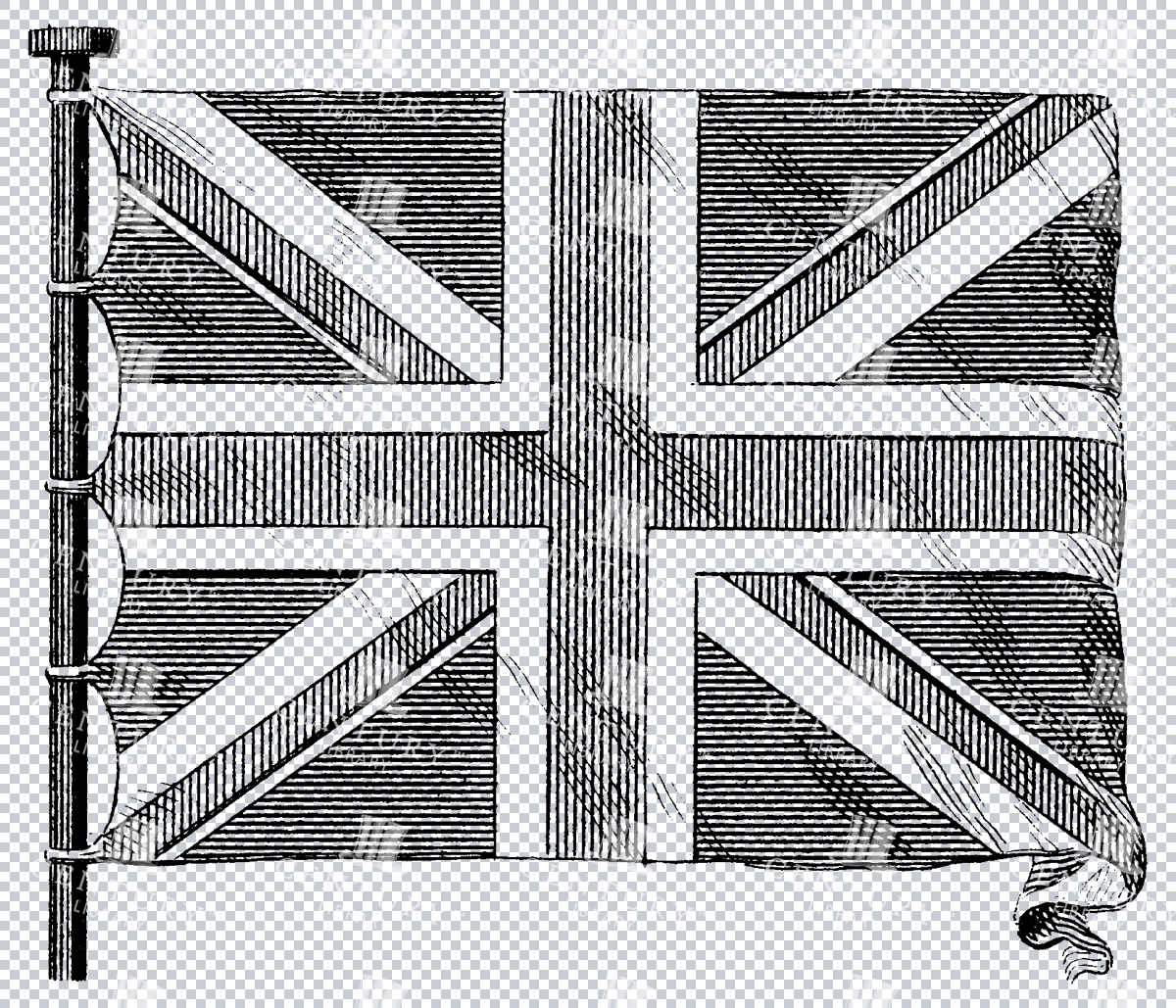

Vintage Heraldry Naval Flag with the Union Jack Line Art
A vintage line art illustration of a heraldry naval flag with the Union Jack, perfect for maritime and historical-themed designs.
- Image Type(s): PNG
Related Images


Vintage Heraldry Naval Flag for the Naval Office
A vintage line art illustration of a heraldry naval flag for the naval office, capturing historical and maritime elements in a classic style.
- Image Type(s): PNG
Related Images
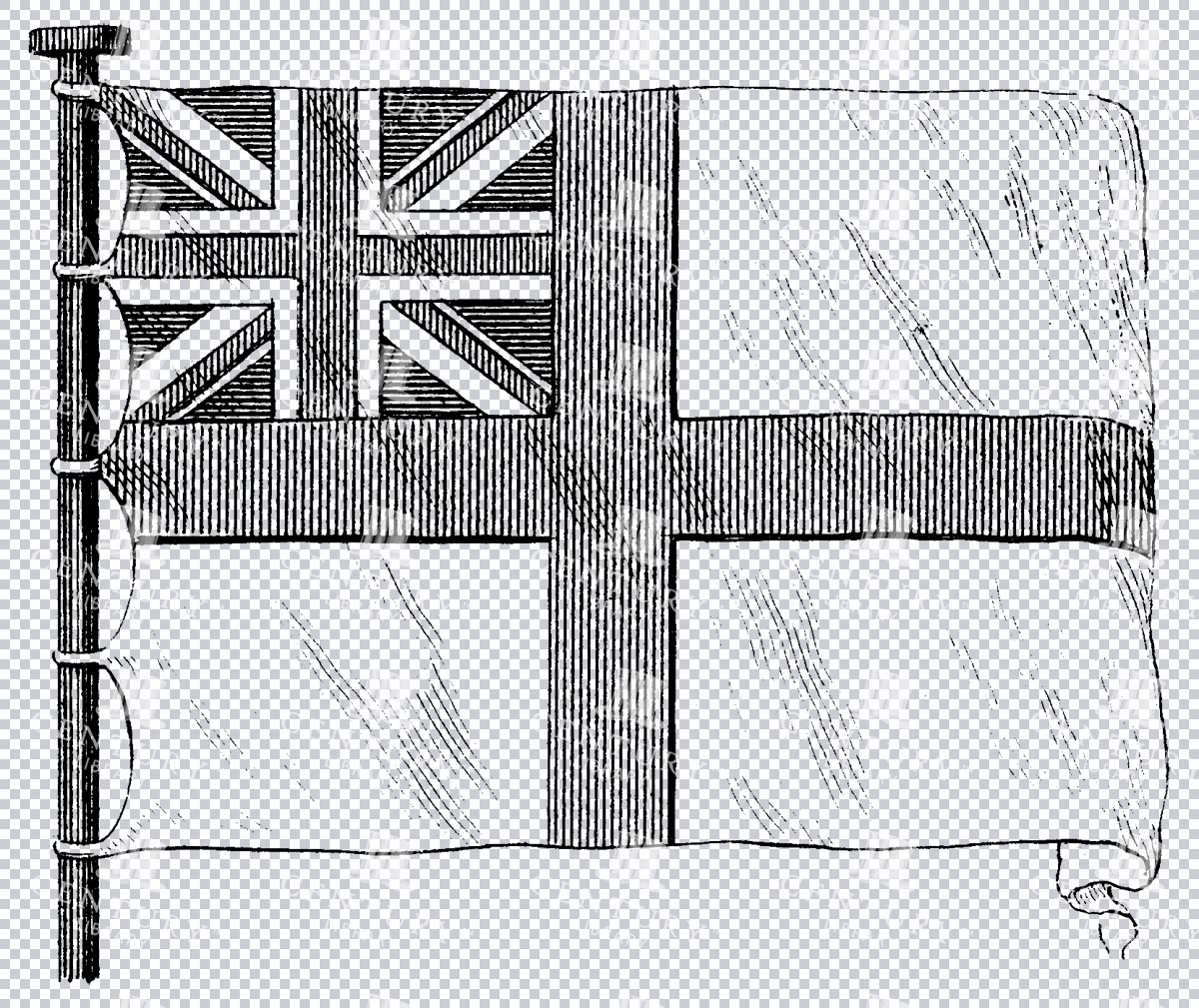

Old Naval Heraldry Flag for the UK – White Ensign
A vintage line art illustration of the old naval heraldry flag for the UK, known as the White Ensign, perfect for maritime and historical-themed designs.
- Image Type(s): PNG
Related Images
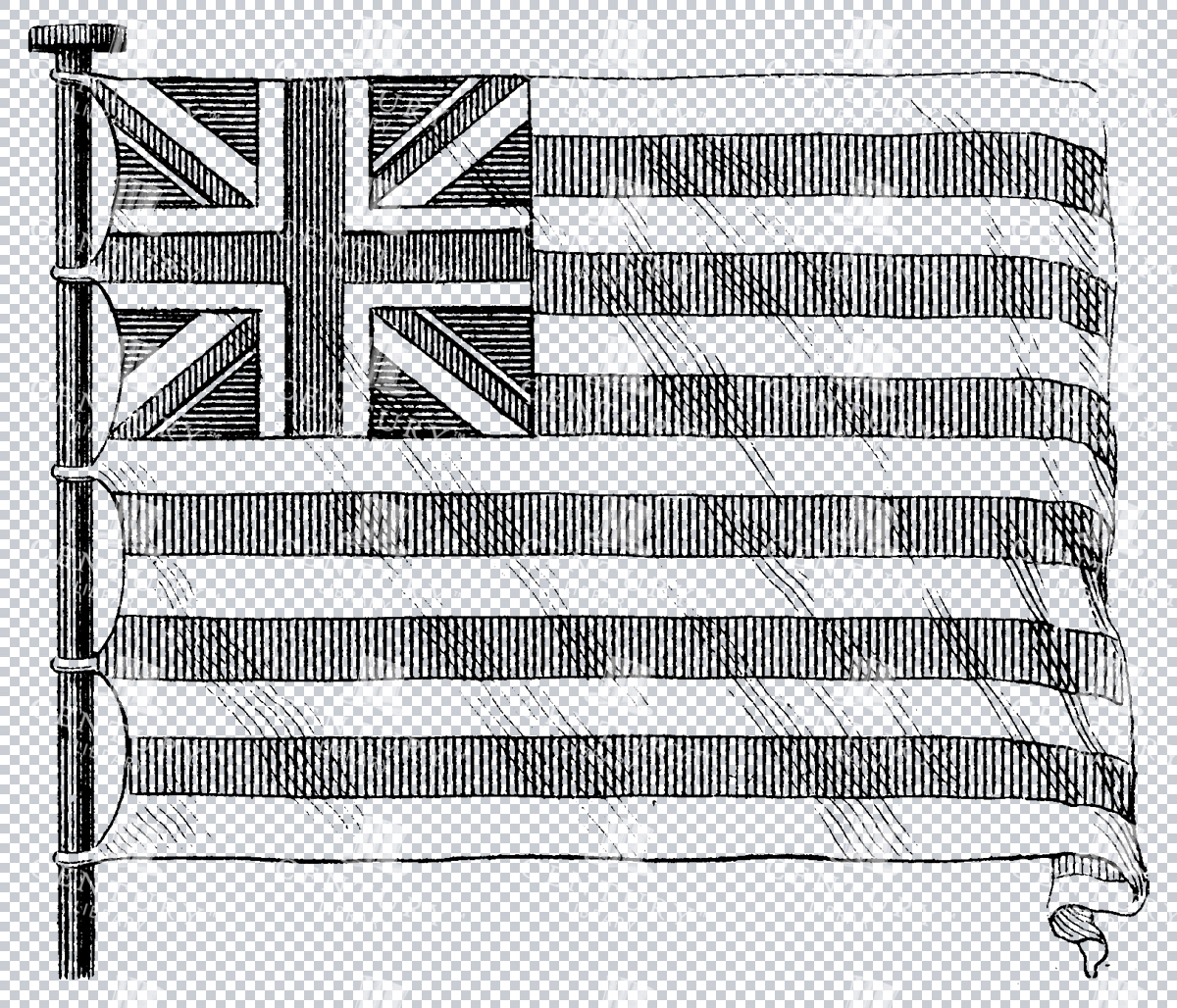

East India Company Vintage Heraldry Naval Flag
A vintage line art illustration of the East India Company naval flag, depicting historical heraldry elements associated with maritime trade and colonial history.
- Image Type(s): PNG
Related Images
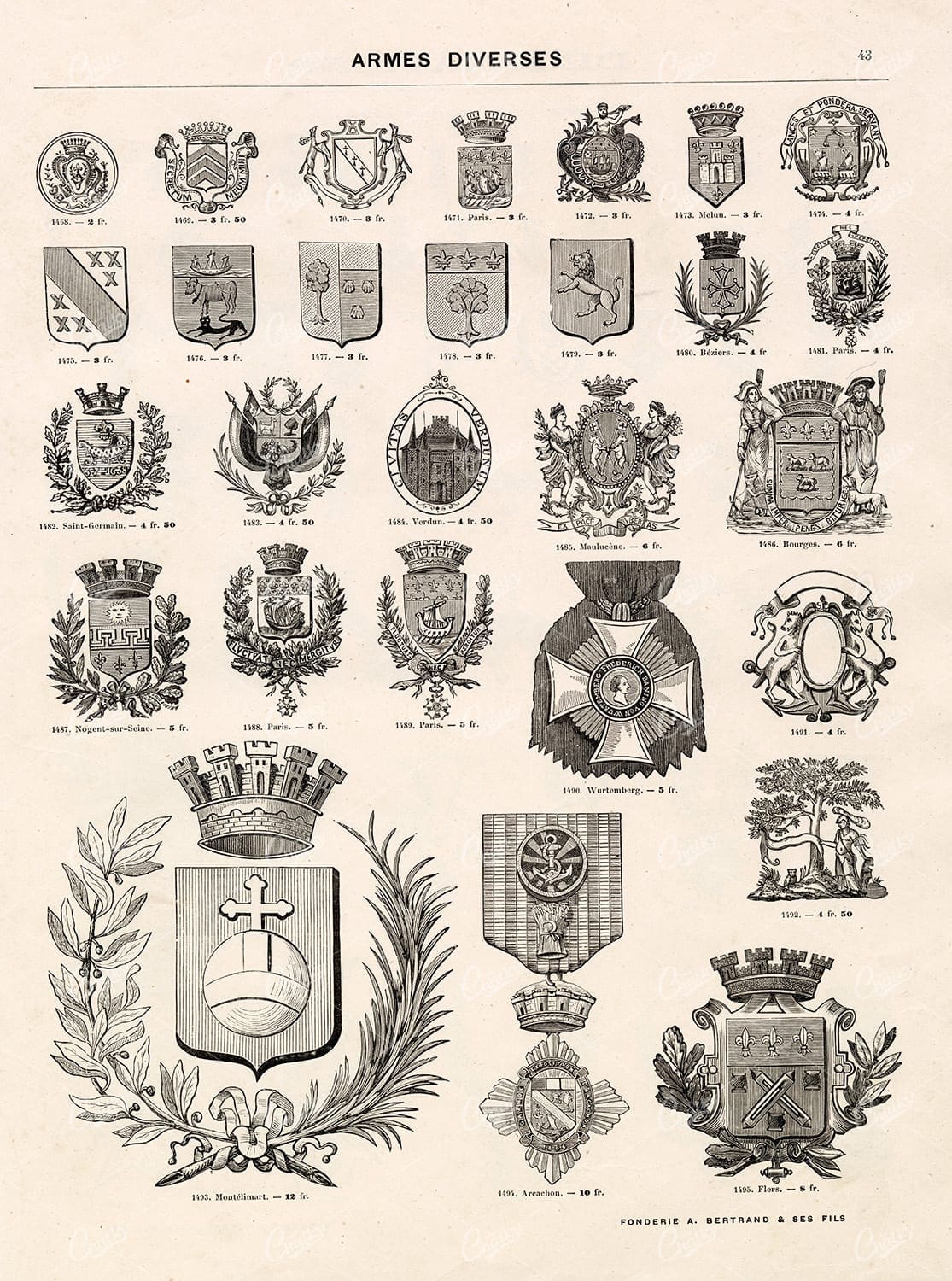

ARMES Diverses (Various Weapons) – Antique 1800s Heraldry Insignias
The type foundry and print shop of old would create books, like the one this image was discovered within, to help customers and clients with their design choices. Naturally, these books were jam packed with useful illustrative elements that could be combined to create a final piece. Today, these books are extremely difficult to get a hold of. Especially those that were published in the late 1800s. They were not mainstream publications, they simply served as 'catalogs' and thus were only produced in small numbers. Fortunately, we were introduced to a collector who had precisely what we had been searching for for so long. After some costly negotiations, we're very excited to be able to share the wonderful gems within.
- License Info
- Resolution: 8972 x 12097
- Year of Print: Late 1800s
- Artist: A Bertrand
From this collection
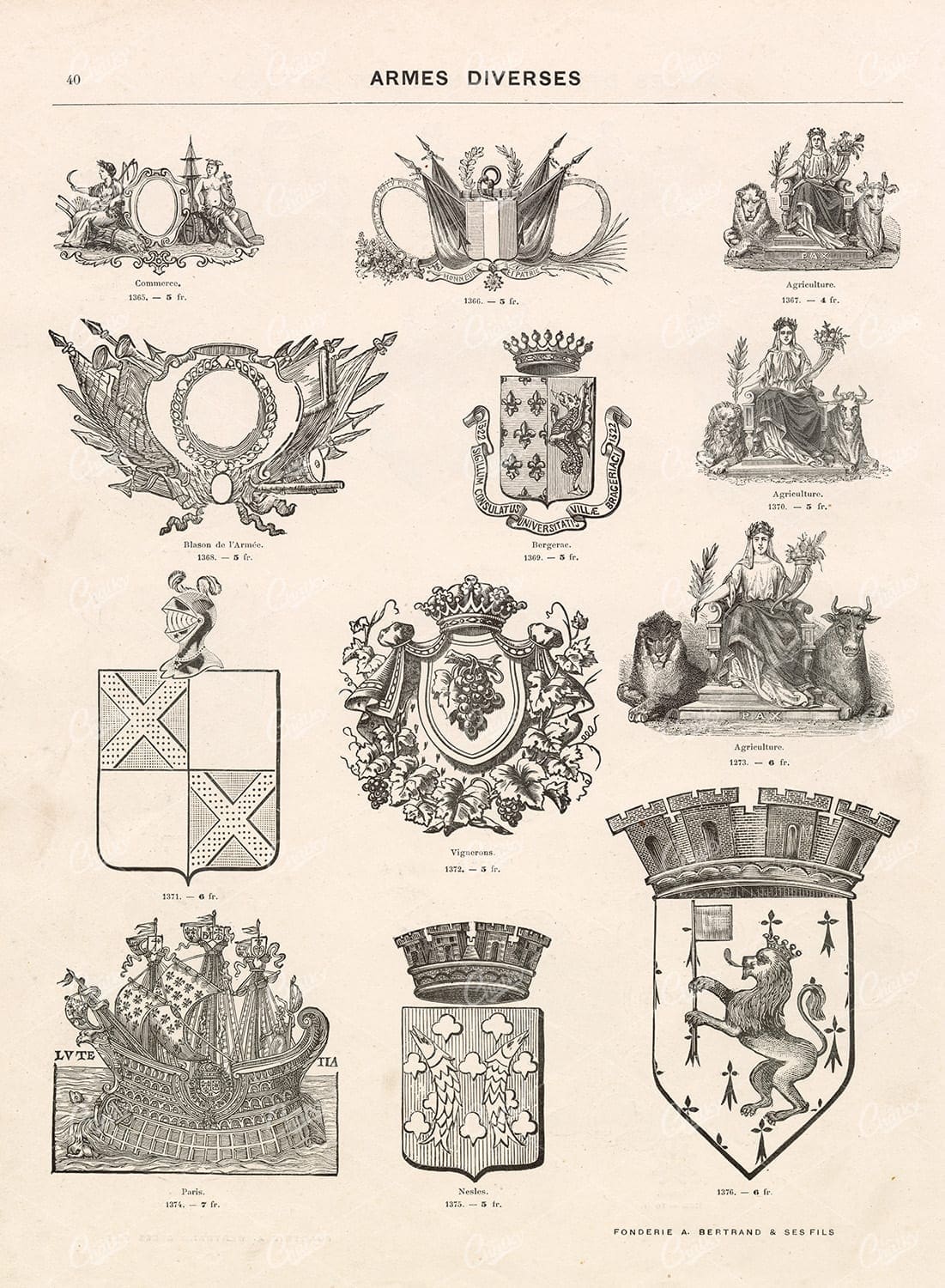

ARMES Diverses (Various Weapons) – Antique 1800s Heraldry Insignias
The type foundry and print shop of old would create books, like the one this image was discovered within, to help customers and clients with their design choices. Naturally, these books were jam packed with useful illustrative elements that could be combined to create a final piece. Today, these books are extremely difficult to get a hold of. Especially those that were published in the late 1800s. They were not mainstream publications, they simply served as 'catalogs' and thus were only produced in small numbers. Fortunately, we were introduced to a collector who had precisely what we had been searching for for so long. After some costly negotiations, we're very excited to be able to share the wonderful gems within.
- License Info
- Resolution: 8892 x 12064
- Year of Print: Late 1800s
- Artist: A Bertrand
From this collection
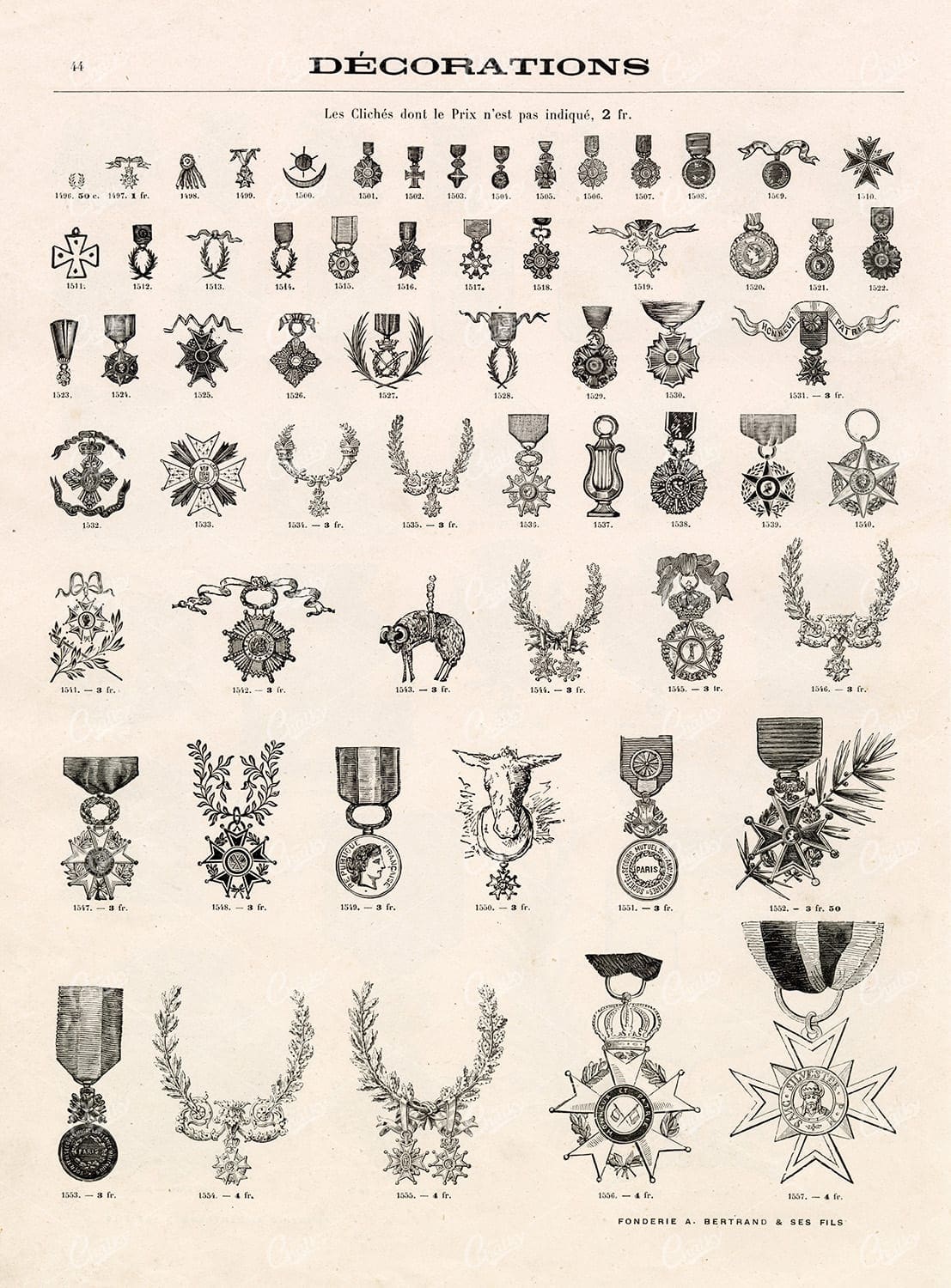

FRENCH Insignia Decorations (Military Badges and Stars) – Antique 1800s Illustrrations
The type foundry and print shop of old would create books, like the one this image was discovered within, to help customers and clients with their design choices. Naturally, these books were jam packed with useful illustrative elements that could be combined to create a final piece. Today, these books are extremely difficult to get a hold of. Especially those that were published in the late 1800s. They were not mainstream publications, they simply served as 'catalogs' and thus were only produced in small numbers. Fortunately, we were introduced to a collector who had precisely what we had been searching for for so long. After some costly negotiations, we're very excited to be able to share the wonderful gems within.
- License Info
- Resolution: 8844 x 11918
- Year of Print: Late 1800s
- Artist: A Bertrand
From this collection
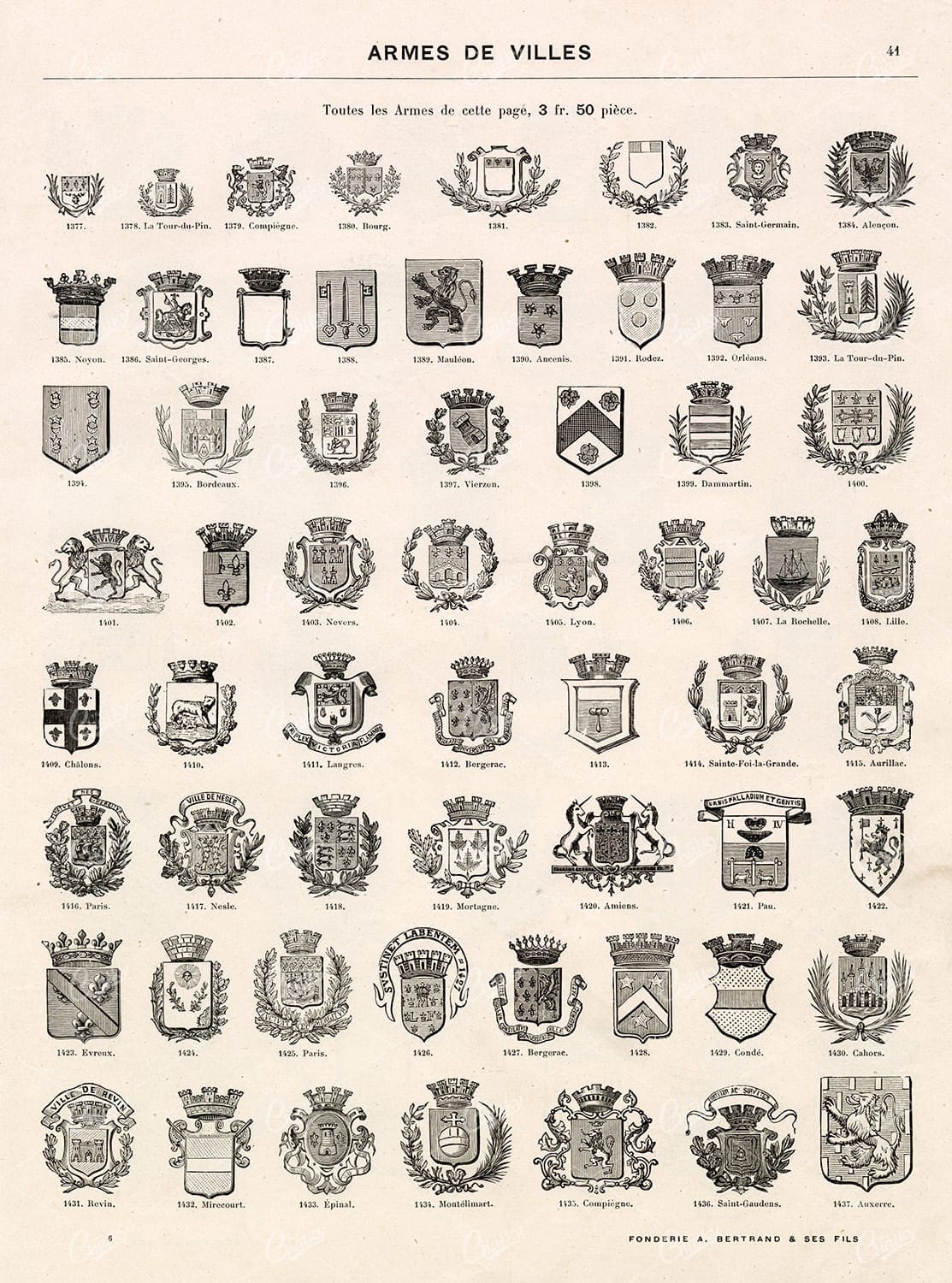

HERLADRY Insignias for French Cities; Auxorre, Revin, Paris, Amiens, Lille, Saint-Germain 1800s Illustrations
The type foundry and print shop of old would create books, like the one this image was discovered within, to help customers and clients with their design choices. Naturally, these books were jam packed with useful illustrative elements that could be combined to create a final piece. Today, these books are extremely difficult to get a hold of. Especially those that were published in the late 1800s. They were not mainstream publications, they simply served as 'catalogs' and thus were only produced in small numbers. Fortunately, we were introduced to a collector who had precisely what we had been searching for for so long. After some costly negotiations, we're very excited to be able to share the wonderful gems within.
- License Info
- Resolution: 9003 x 12050
- Year of Print: Late 1800s
- Artist: A Bertrand
From this collection


HERALDRY Insignias for France, Russia, Austria – Antique 1800s Stock Illustration
The type foundry and print shop of old would create books, like the one this image was discovered within, to help customers and clients with their design choices. Naturally, these books were jam packed with useful illustrative elements that could be combined to create a final piece. Today, these books are extremely difficult to get a hold of. Especially those that were published in the late 1800s. They were not mainstream publications, they simply served as 'catalogs' and thus were only produced in small numbers. Fortunately, we were introduced to a collector who had precisely what we had been searching for for so long. After some costly negotiations, we're very excited to be able to share the wonderful gems within.
- License Info
- Resolution: 8869 x 11878
- Year of Print: Late 1800s
- Artist: A Bertrand
From this collection
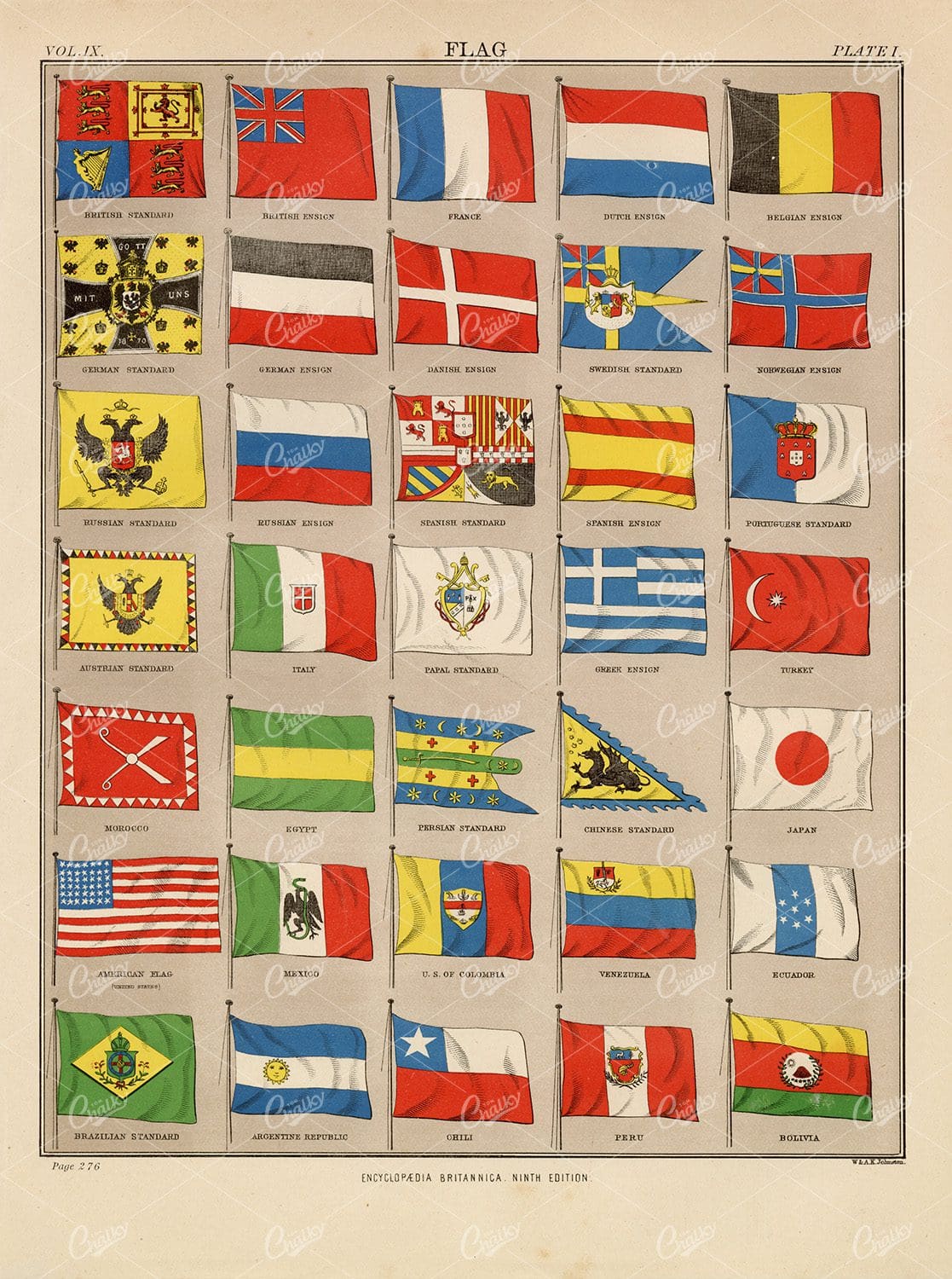

Encyclopedia Britannica 1880 – Vintage Flags
- License Info
- Resolution: 7183px x 9648px
- Year of Print: 1880
- Artist: Encyclopedia Britannica
From this collection
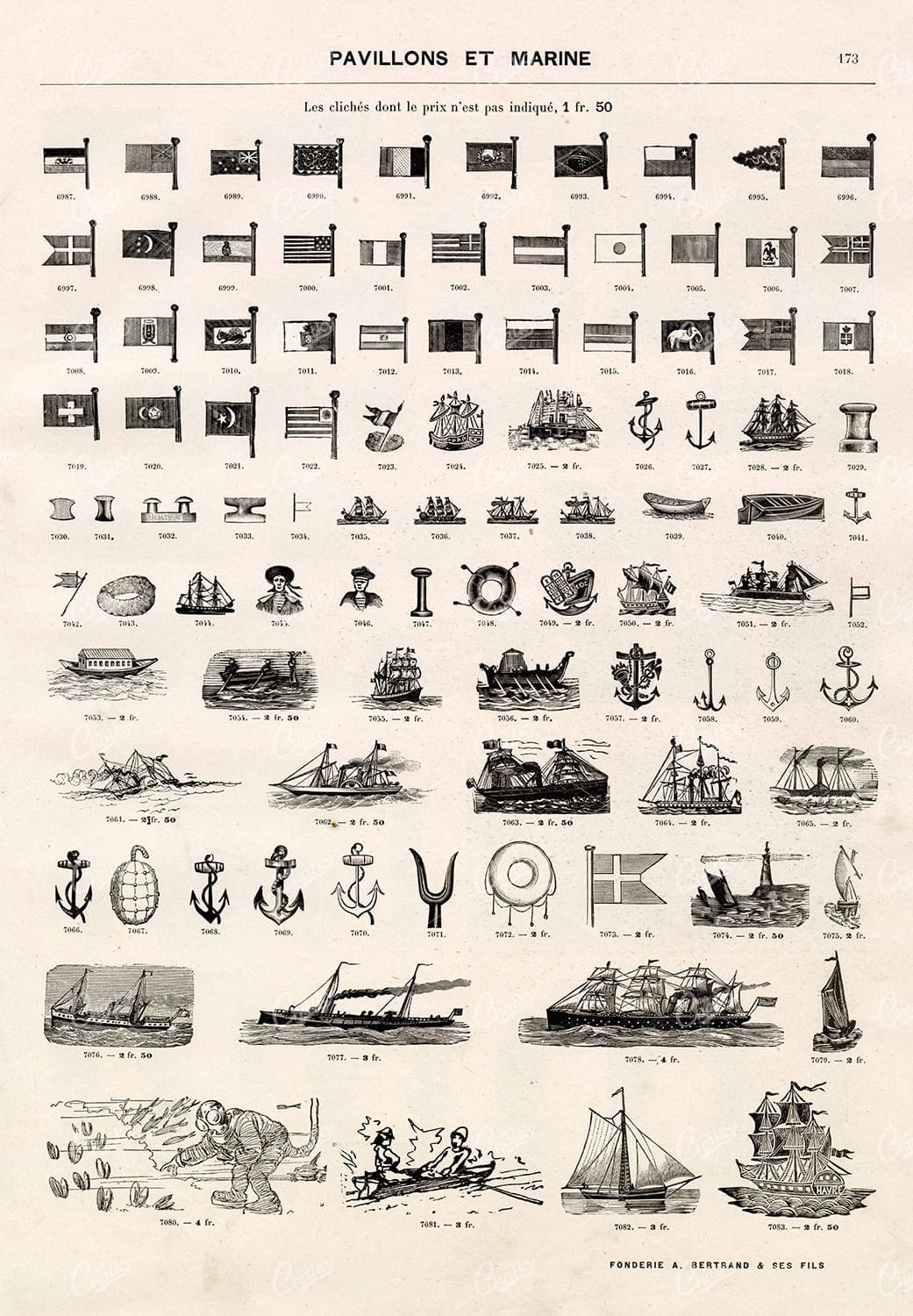

VINTAGE Image Sheet of Marines Related Vignette Illustrations
The type foundry and print shop of old would create books, like the one this image was discovered within, to help customers and clients with their design choices. Naturally, these books were jam packed with useful illustrative elements that could be combined to create a final piece. Today, these books are extremely difficult to get a hold of. Especially those that were published in the late 1800s. They were not mainstream publications, they simply served as 'catalogs' and thus were only produced in small numbers. Fortunately, we were introduced to a collector who had precisely what we had been searching for for so long. After some costly negotiations, we're very excited to be able to share the wonderful gems within.
- License Info
- Resolution: 8982 x 12879
- Year of Print: Late 1800s
- Artist: A Bertrand
From this collection
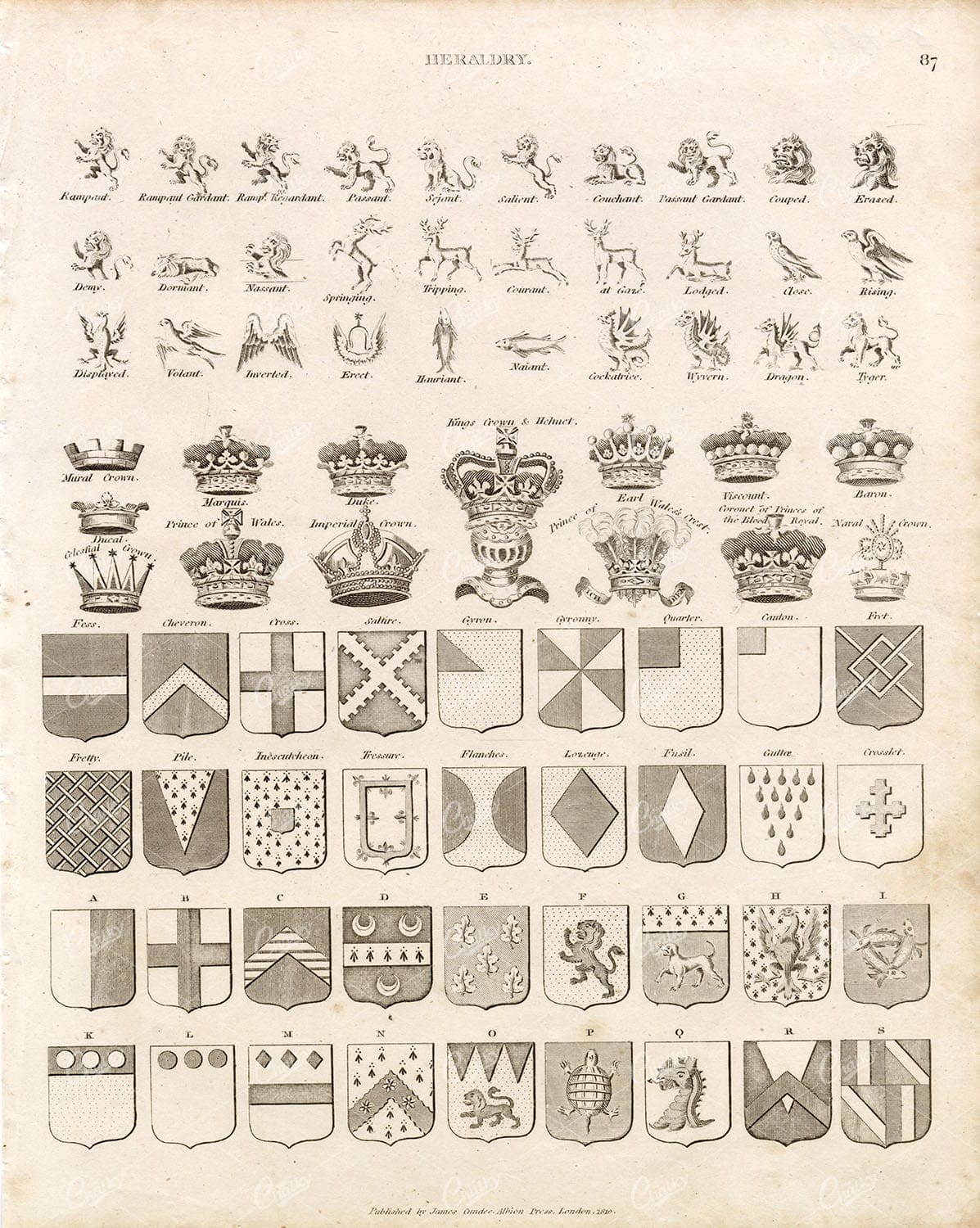

1800s HERALDRY Print – Various Design Elements – RARE Engraving
You're looking at an Original pre-1820's Antique Engraving from a rare copy of Abraham Rees' "The Cyclopaedia; or, UNIVERSAL DICTIONARY OF ARTS, SCIENCES, and LITERATURE" (Published 1820 by Longman, Hurst, Rees, Orme)
- License Info
- Resolution: 7400 x 9350 300dpi
- Year of Print: 1800s
- Artist: Abraham Rees
From this collection
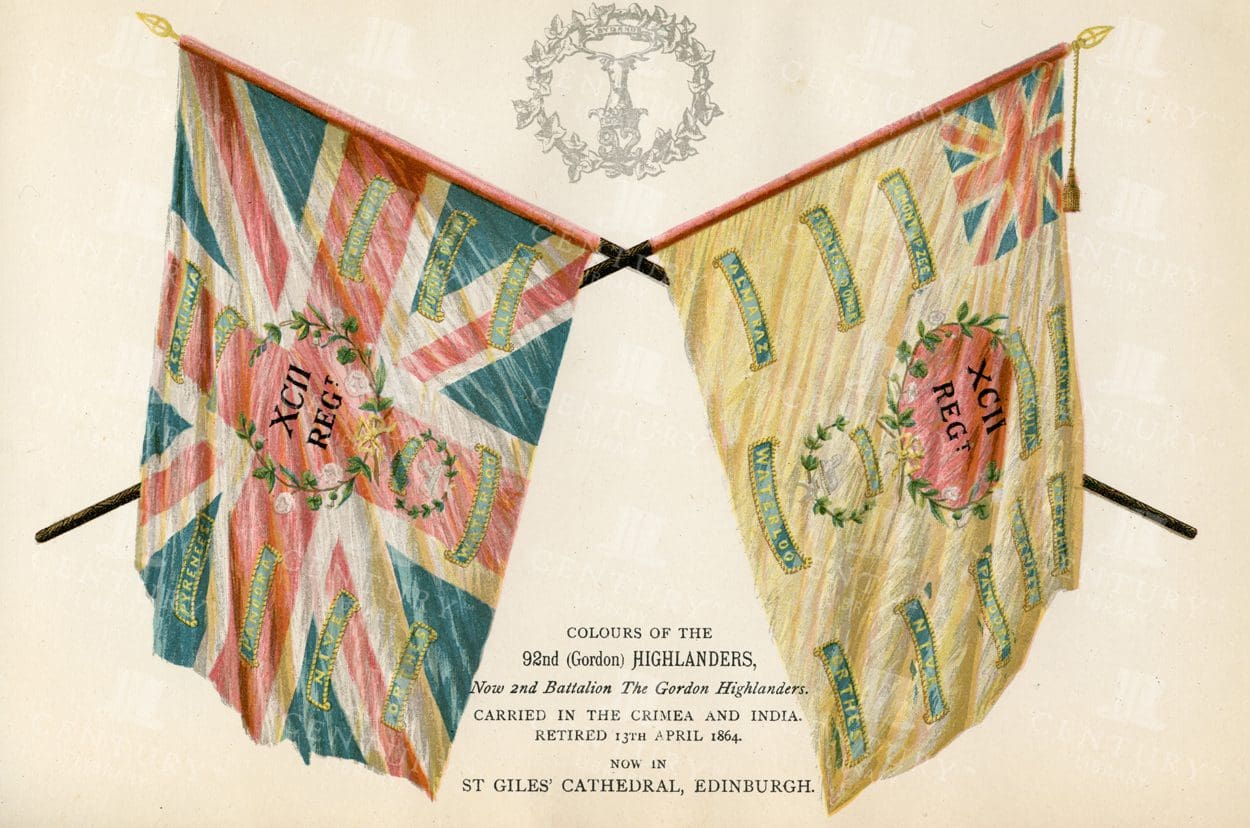

VINTAGE 1885 Scottish Illustration – Colours of the 92nd Highlanders
- Resolution: 8805px x 5737px
- Year of Print: 1885
- Artist: William Melven
Related Images
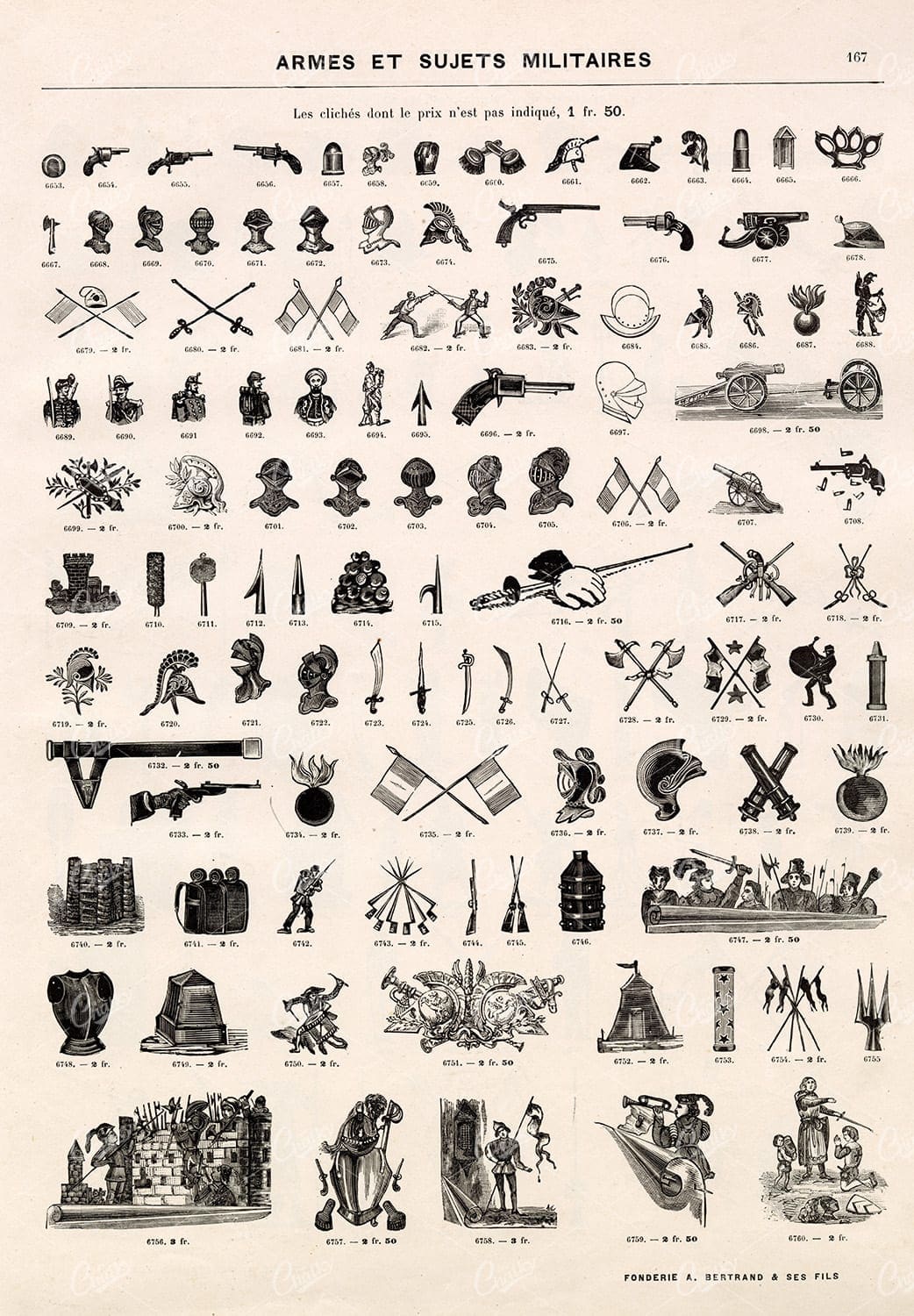

VINTAGE Image Sheet of Military Related Vignette Illustrations
The type foundry and print shop of old would create books, like the one this image was discovered within, to help customers and clients with their design choices. Naturally, these books were jam packed with useful illustrative elements that could be combined to create a final piece. Today, these books are extremely difficult to get a hold of. Especially those that were published in the late 1800s. They were not mainstream publications, they simply served as 'catalogs' and thus were only produced in small numbers. Fortunately, we were introduced to a collector who had precisely what we had been searching for for so long. After some costly negotiations, we're very excited to be able to share the wonderful gems within.
- License Info
- Resolution: 9020 x 12622
- Year of Print: Late 1800s
- Artist: A Bertrand
Related Images
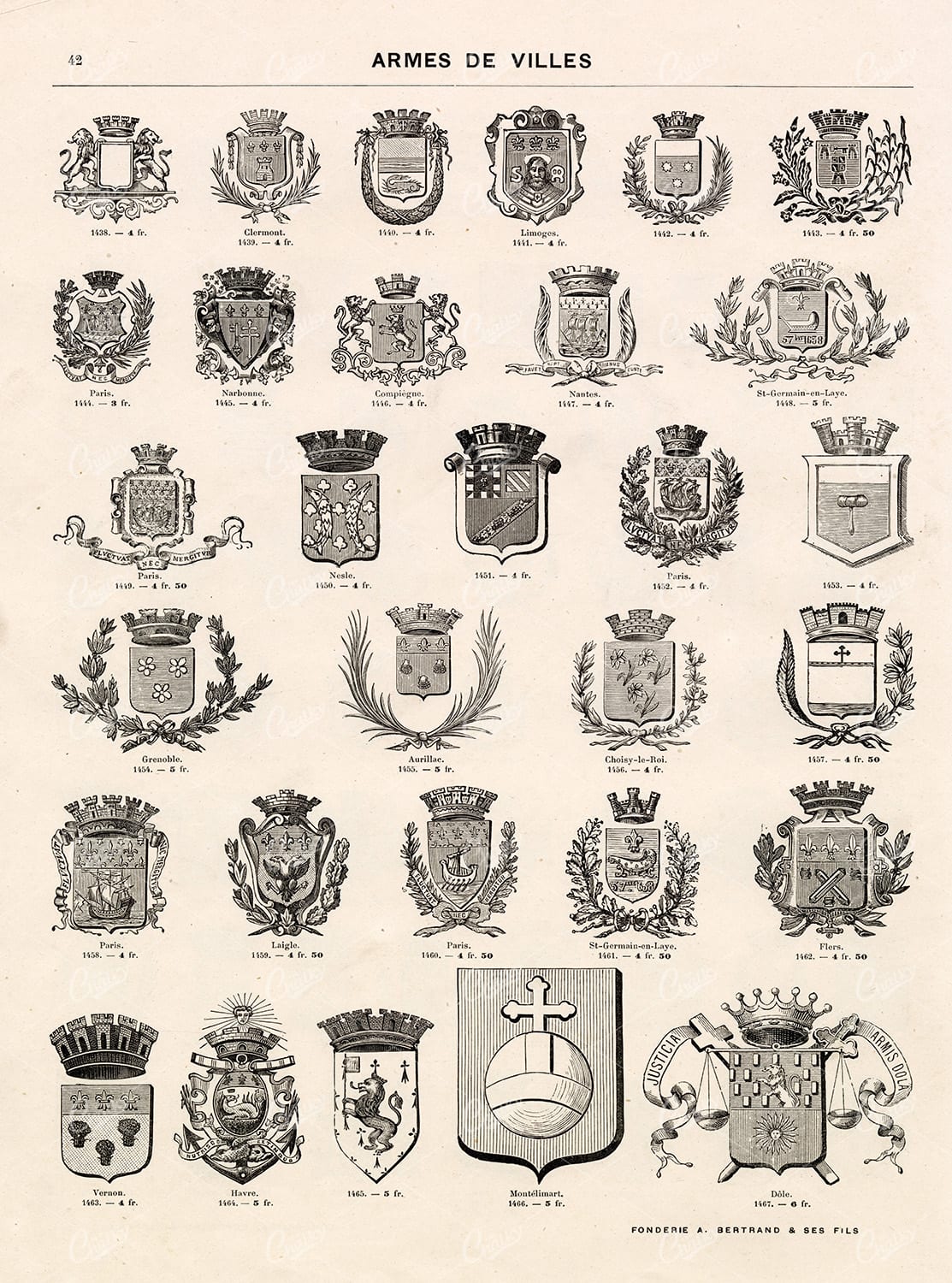

HERLADRY Insignias for French Cities; Paris, Vernon, Laigle, Nantes, Limoges 1800s Illustrations
The type foundry and print shop of old would create books, like the one this image was discovered within, to help customers and clients with their design choices. Naturally, these books were jam packed with useful illustrative elements that could be combined to create a final piece. Today, these books are extremely difficult to get a hold of. Especially those that were published in the late 1800s. They were not mainstream publications, they simply served as 'catalogs' and thus were only produced in small numbers. Fortunately, we were introduced to a collector who had precisely what we had been searching for for so long. After some costly negotiations, we're very excited to be able to share the wonderful gems within.
- License Info
- Resolution: 9014 x 12280
- Year of Print: Late 1800s
- Artist: A Bertrand
Related Images
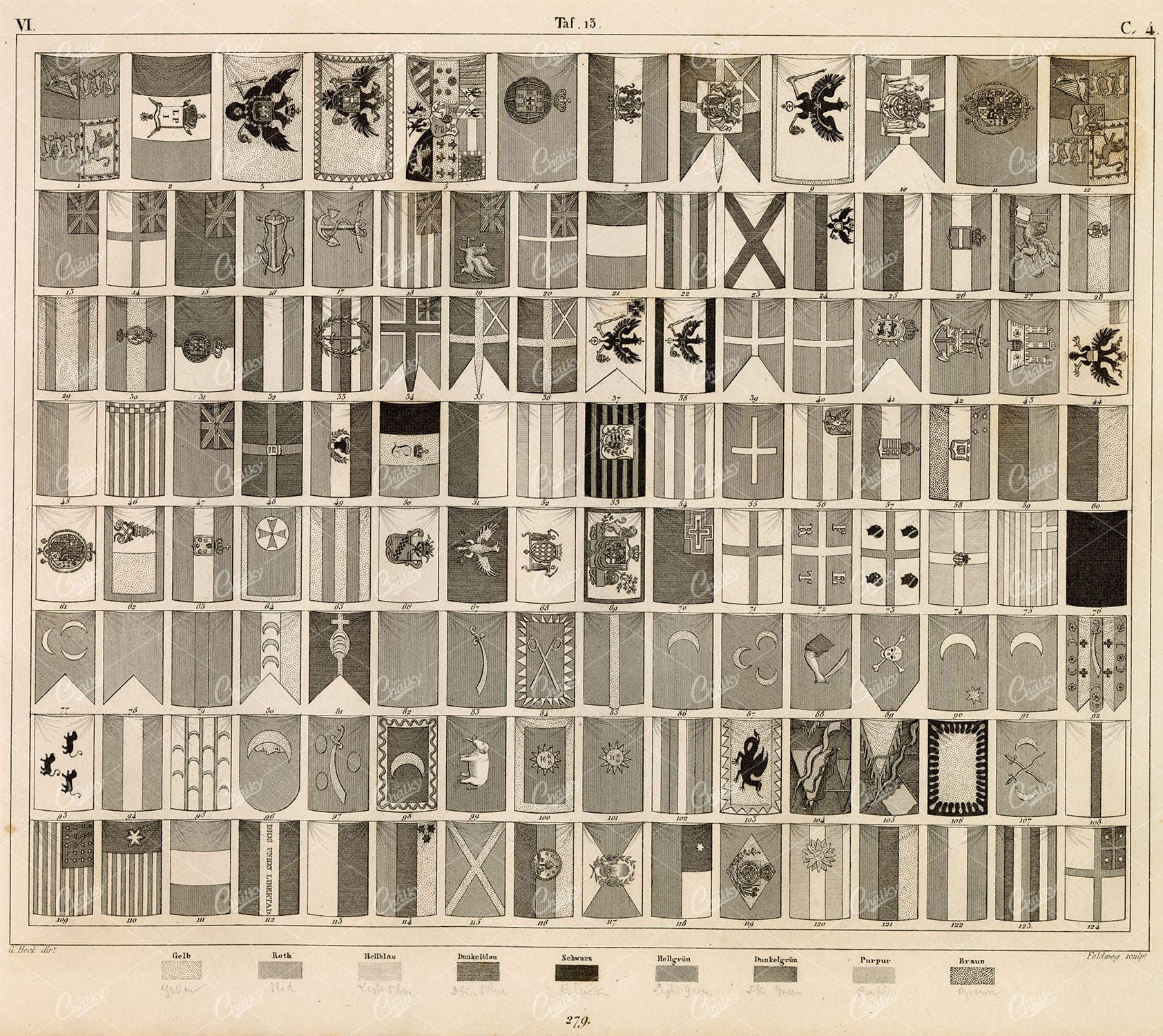

NAVAL Sciences – Flags of Various Nations – Antique 1851 J. Heck Print
You’re looking at a well preserved original plate from Johann Georg Heck's “Iconographic Encyclopedia of Sciences, Literature and Art” published in 1851 by Rudolphe Garrigue in New York. We were extremely fortunate to acquire the full collection of illustrative prints from the series, which after many months of looking, proved to be very difficult!
- License Info
- Resolution: 9052 x 8064 300dpi
- Year of Print: 1851
- Artist: Johann Georg Heck
From this collection
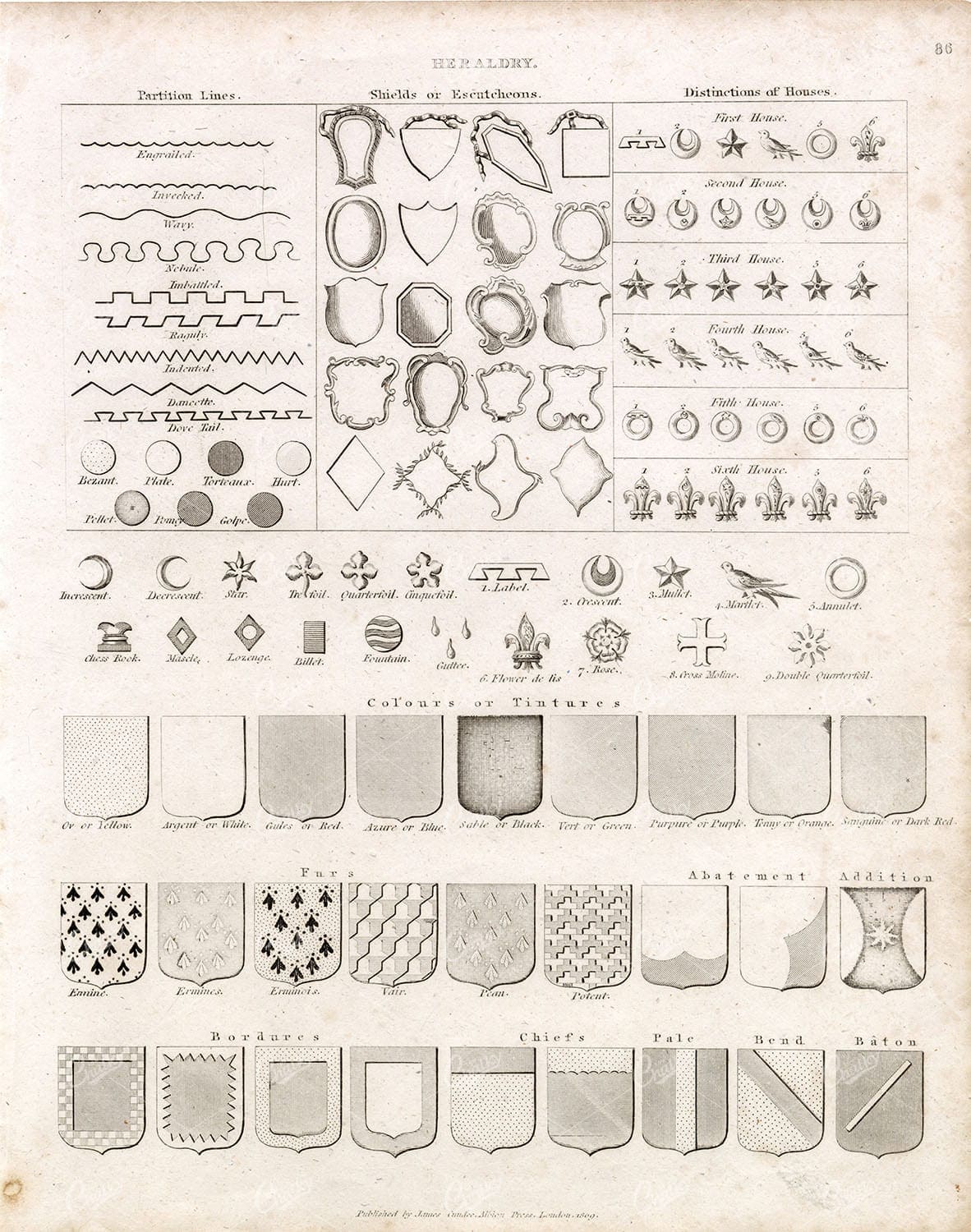

1800s HERALDRY Print – Various Design Elements – RARE Engraving
You're looking at an Original pre-1820's Antique Engraving from a rare copy of Abraham Rees' "The Cyclopaedia; or, UNIVERSAL DICTIONARY OF ARTS, SCIENCES, and LITERATURE" (Published 1820 by Longman, Hurst, Rees, Orme)
- License Info
- Resolution: 7400 x 9350 300dpi
- Year of Print: 1800s
- Artist: Abraham Rees
From this collection


VINTAGE 1885 Illustration – Colours of the 74th Highlanders
- Resolution: 8855px x 5784px
- Year of Print: 1885
- Artist: William Melven
Related Images
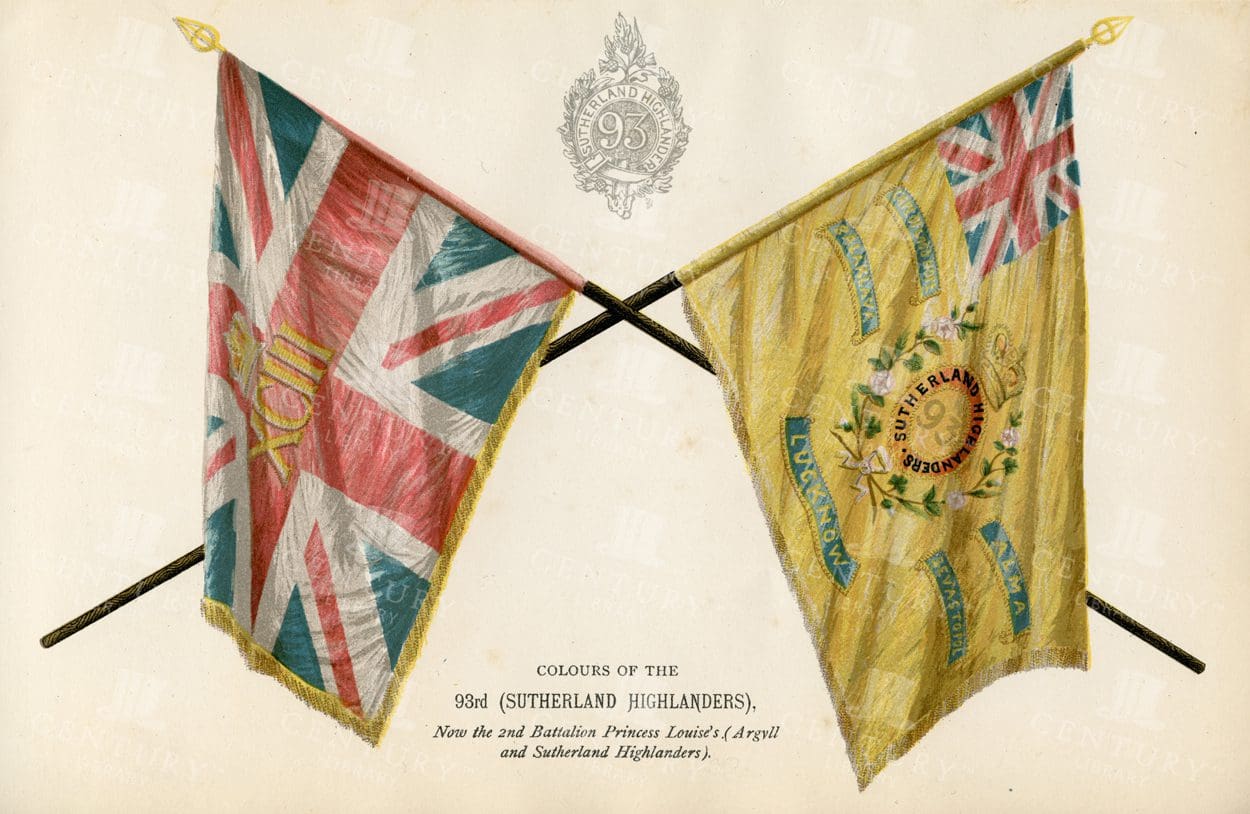

VINTAGE 1885 Scottish Illustration – Colours of the 93rd Highlanders
- Resolution: 8863px x 11642px
- Year of Print: 1885
- Artist: William Melven
Related Images


VINTAGE 1885 Illustration – Colours of the 78th Highlanders
- Resolution: 5652px x 8775px
- Year of Print: 1885
- Artist: William Melven
Related Images


VINTAGE 1885 Illustration – Colours of the 91st Highlanders
- Resolution: 5583px x 8604px
- Year of Print: 1885
- Artist: William Melven
Related Images
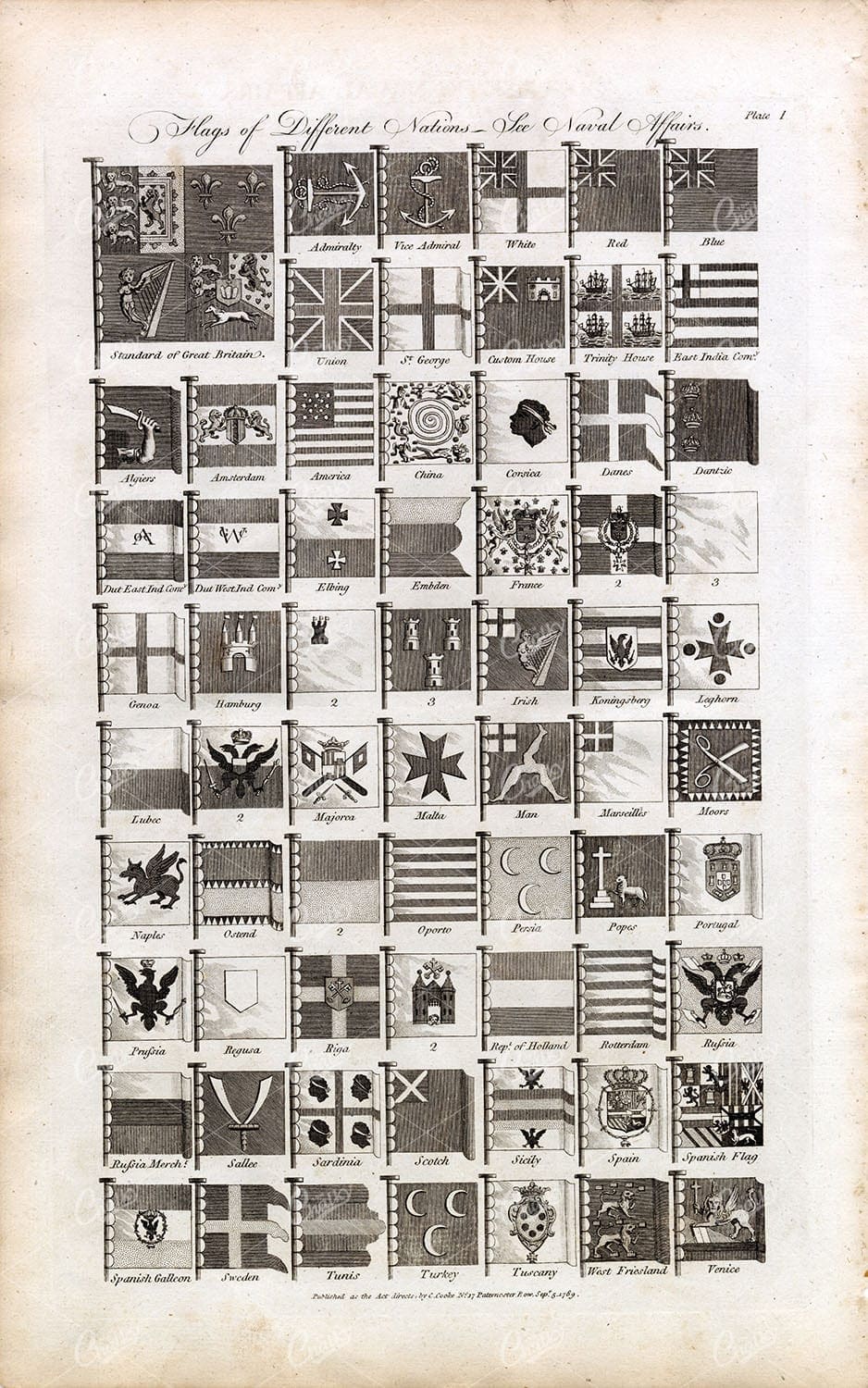

ANTIQUE NAVAL Print – Flags of Different Nations – Original 1791 Engraving
You're looking at a scarce, 229 year old, steel plate engraving from the original "The New Encyclopaedia Or Modern Universal Dictionary Of Arts And Sciences On A New And Improved Plan" by Hall, William Henry, Bedford Row, London, published by C Cooke, London.
- License Info
- Resolution: 8300 x 13800 300dpi
- Year of Print: 1791
- Artist: C. Cooke
Related Images


INTRICATE Ornamental Flags and Poles by F. Wust – Dekorative Vorbilder
This image was sourced from our original 'Dekorative Vorbilder' collection; A gorgeous collection of Art Nouveau decorative patterns, graphics and illustrations including plants, figures and animals. For draftsman, painters, graphic artists, decorators, sculptors and architects. Published in 1904 by Julius Hoffman, Stuttgart.
- License Info
- Resolution: 8700 x 12200 300dpi
- Year of Print: 1904
- Artist: Julius Hoffman
From this collection
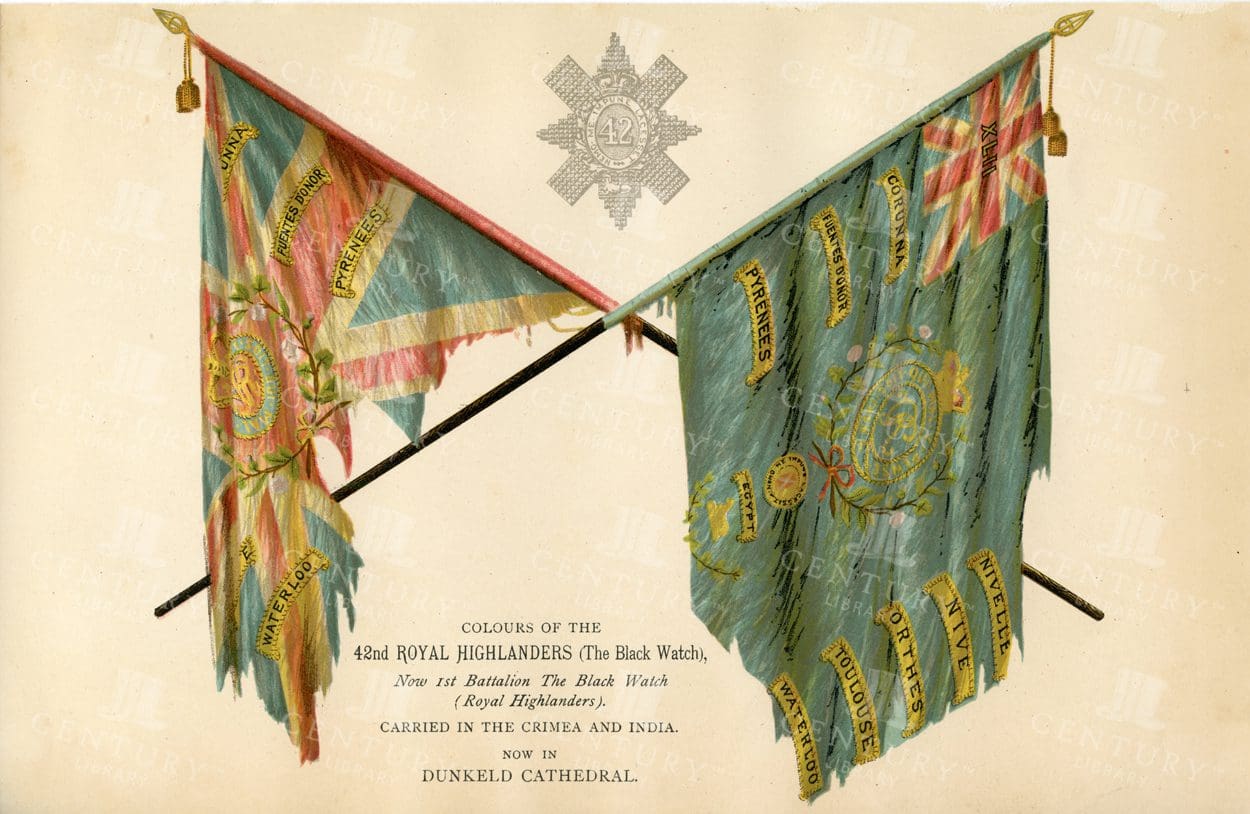

VINTAGE 1885 Illustration – Colours of the 42nd Royal Highlanders
- Resolution: 8805px x 5668px
- Year of Print: 1885
- Artist: William Melven
Related Images


WINDSOR CASTLE – Vintage 1840 Engraved Illustration
- Resolution: 7771px x 6060px
- Year of Print: 1840
- Artist: William Tombleson
Related Images
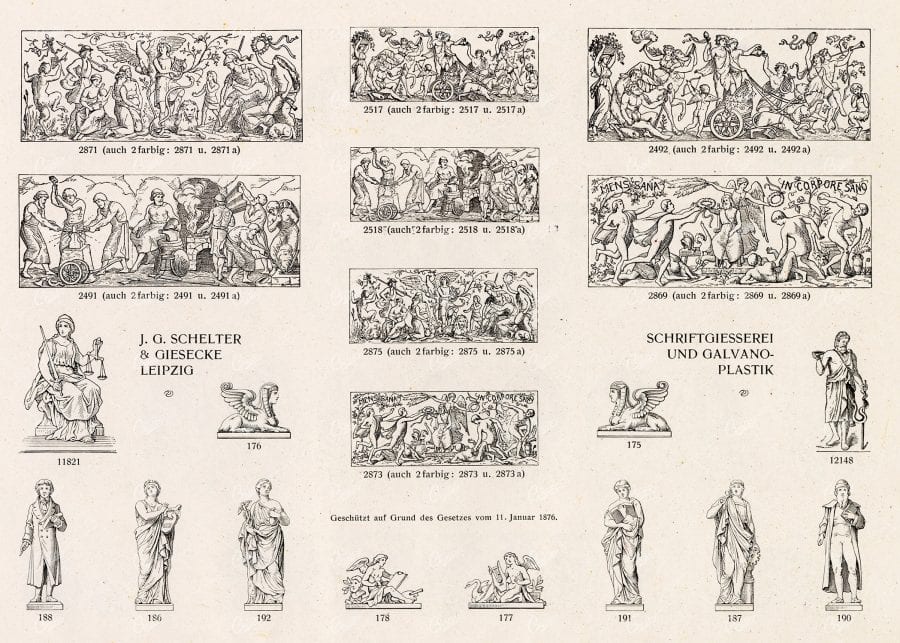
Support the Library
Our supporters and members help us continue collecting and restoring these wonderful pieces of art for the modern creator
Unlock Everything and Become a Member!
While a lot of the library is available for free, some is kept behind closed dusty doors only to be accessed by our lovely members.
